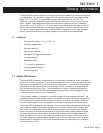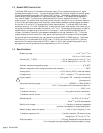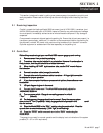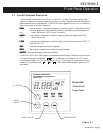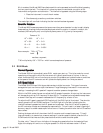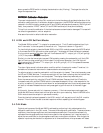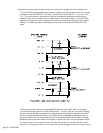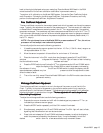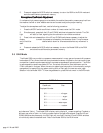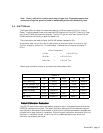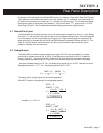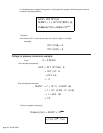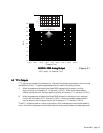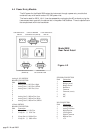Model 2002 page 13
back to the original displayed value upon restarting. Place the Model 2002 back in the RUN
mode to store all of the current calibration coefficients in permanent memory.
To perform a full calibration on the Model 2002 system, first use the Zero Coefficient Adjust-
ment Procedure. Followed by the Midrange Coefficient Adjustment Procedure, and finally
perform the Atmosphere Coefficient Adjustment Procedure.
Zero Coefficient Zero Coefficient
Zero Coefficient Zero Coefficient
Zero Coefficient
AdjustmentAdjustment
AdjustmentAdjustment
Adjustment
The zero coefficient corrects for the constant power level which is present over the entire pressure
range. Typically, this adjustment corrects for low pressure errors. The instrument will need to be
re-zeroed often if measurements are being made in the 10
-4
Torr range, especially if the ambient
temperature changes. The transducer may have a temperature coefficient of up to 2x10
-4
To r r /
o
C.
The instrument remote zero input will allow an external gauge such as an ion gauge to automati-
cally re-zero the Model 2002 whenever the pressure drops below the desired pressure level (if it
has a TTL output).
NOTE: Do not attempt to zero the Model 2002 in pressures above 10
-2
Torr; the micro-
processor will not accept a zero above this pressure.
To manually adjust the zero use the following procedure:
1. If possible, evacuate the vacuum system into the low 10
-6
Torr (1.33x10
-6
mbar) range or as
low as possible below 10
-4
Tor r .
2. Allow the sensor to operate in this condition for a minimum of 15 minutes.
3. Place the instrument in the CAL mode, then simultaneously press the UP and DOWN
switches to bypass the interlock. The CAL light will start to flash indicating
that the calibration mode has been activated.
4. Press the ZERO switch once if below 6x10
-5
Torr otherwise use the UP and DOWN switch
to adjust the display of the Model 2002 to match the pressure indicated by
the reference. If using the UP and DOWN switch to adjust the display, wait 20
seconds between presses at very low pressure to allow the adjustment to take
affect the data to settle.
5. The unit is now fully zeroed. Place the Model 2002 back in the RUN mode to store the zero
in permanent memory.
Midrange Coefficient Midrange Coefficient
Midrange Coefficient Midrange Coefficient
Midrange Coefficient
AdjustmentAdjustment
AdjustmentAdjustment
Adjustment
The midrange coefficient corrects for errors in the slope of the power curve of the thin film
Pirani. Typically, this is due to the geometry of a particular sensor and will only need to be
performed once in the lifetime of the sensor. This adjustment might be needed if a full calibration
is being performed in a gas other than nitrogen.
The zero adjustment will need to be perforThe zero adjustment will need to be perfor
The zero adjustment will need to be perforThe zero adjustment will need to be perfor
The zero adjustment will need to be perfor
medmed
medmed
med
before making this adjustmentbefore making this adjustment
before making this adjustmentbefore making this adjustment
before making this adjustment.
To adjust the midrange coefficient use the following procedure:
1. Evacuate the vacuum chamber and refill with the desired gas to a pressure of 7 Torr, as
indicated by a reference vacuum gauge.
2. Press the MODE switch repeatedly until the CAL mode is illuminated.
3. Simultaneously, press both the UP and DOWN switches. The CAL light will start to flash,
signalling that the calibration can now be conducted.
4. Press, hold and release the UP and DOWN switches as necessary to adjust the display to
match the pressure indicated by the reference. Note: It may be necessary to hold the
desired switch down for a few seconds before any movement is seen.



